Japan is indeed an extremely fascinating country, renowned for its natural wonders, cherry blossom trees, anime, sushi, and cutting-edge technological innovations. Its uniqueness stands out in the world, offering a blend of tradition and modernity. Japan is known for its distinctive culture, and its quirks and eccentricities contribute to its charm. The country’s allure is encapsulated in various aspects, from its scenic landscapes to its unusual and otherworldly elements. Let’s delve into some captivating photos that showcase the distinctiveness and diversity that make Japan unlike any other country in the world.
A Café With Robot Servers Controlled by the Physically Disabled

Japan is indeed known for its commitment to taking care of its citizens, and it’s not uncommon for the country to innovate solutions that address various needs. The concept of a cafe in Japan replacing human waitstaff with robot servers is a fascinating example of such innovation. What makes this initiative even more commendable is that the robots are controlled by employees who are paralyzed, providing a unique job opportunity for individuals with physical disabilities. This blend of technology and inclusivity not only serves a practical purpose but also contributes to fostering a more inclusive and accessible society.
Chronicling the Complicated Love Lives of Penguins

People adore penguins—they’re adorable and surprisingly complex! At the Kyoto Aquarium, they’ve made a flow chart to unravel the drama, romances, and breakups in the penguin world. It’s a fascinating read, and the guests are sure to appreciate the effort put into sharing the secrets of penguin love lives.
Those Are Some Perfectly Square Watermelons
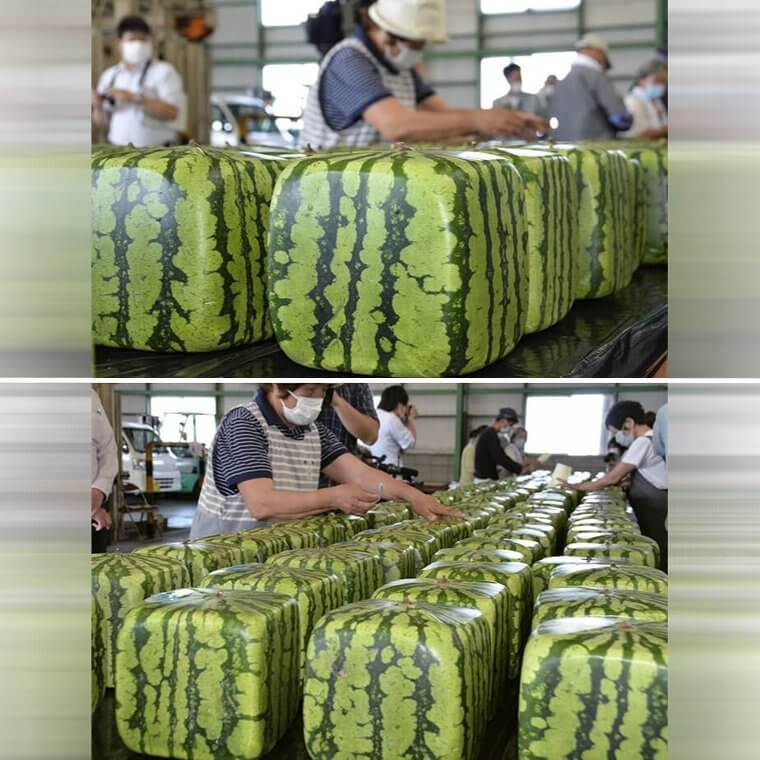
Have you ever heard of square watermelons? They might seem like something from a sci-fi movie, but in Japan, they’re a real thing! There’s a company that grows watermelons in a square shape by placing them in a square box while they’re on the vine. This unique method ensures they have the perfect shape and size. The company claims that this square shape makes shipping, stacking, and storing in the refrigerator much more convenient. It’s a quirky and practical twist on the traditional watermelon!
Just 2 Days to Repair a Massive Sinkhole
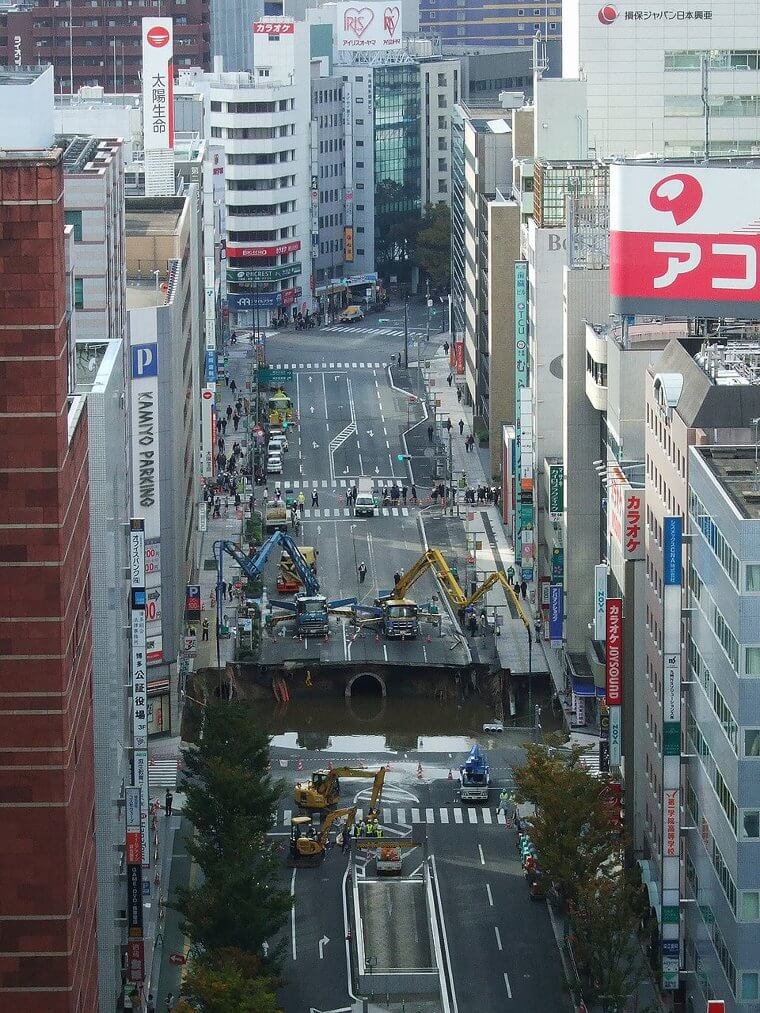
Japan, a country familiar with earthquakes, faced a massive sinkhole in Fukuoka City. What’s surprising is how swiftly they repaired it—just 2 days! While dealing with such a daunting task, other countries might take weeks or even months to completely fix a sinkhole of this scale. Japan’s efficiency in handling such challenges is indeed remarkable.
Simple Way to Save Water

Japan has taken the concept of 2 for 1 to a whole new level with the toilet sink. It’s a smart design where, after using the bathroom, you can wash your hands at the sink attached to the top of the toilet. What’s clever is that the excess water from handwashing is saved and used for the next flush. It’s a perfect way to reuse water and reduce waste, making the most out of every drop.
Friendly Stranger at the Train Station

Picture this: you’re at the train station, a bit early and with time to spare. Instead of idly waiting, a friendly man approaches you and suggests playing two-player Game Boy. Why not? He hands you the extra Game Boy, and for the next 30 minutes, you turn your wait into an enjoyable gaming session before the train arrives. It’s a spontaneous and fun way to make the most of your time at the station.
Bus Drivers Strike Without Causing the People to Suffer

Regrettably, when employees go on strike, it can create difficulties not just for their employers but also for the general public. In Japan, when bus drivers decided to strike, they aimed to spare daily travelers from chaos. Rather than completely halting services, they went on strike by not accepting bus fare from passengers while still maintaining their usual routes. This unique approach allowed them to make a statement while minimizing the inconvenience for those who depend on bus services in their daily lives.
The Man With the Flute and His Matching Dog
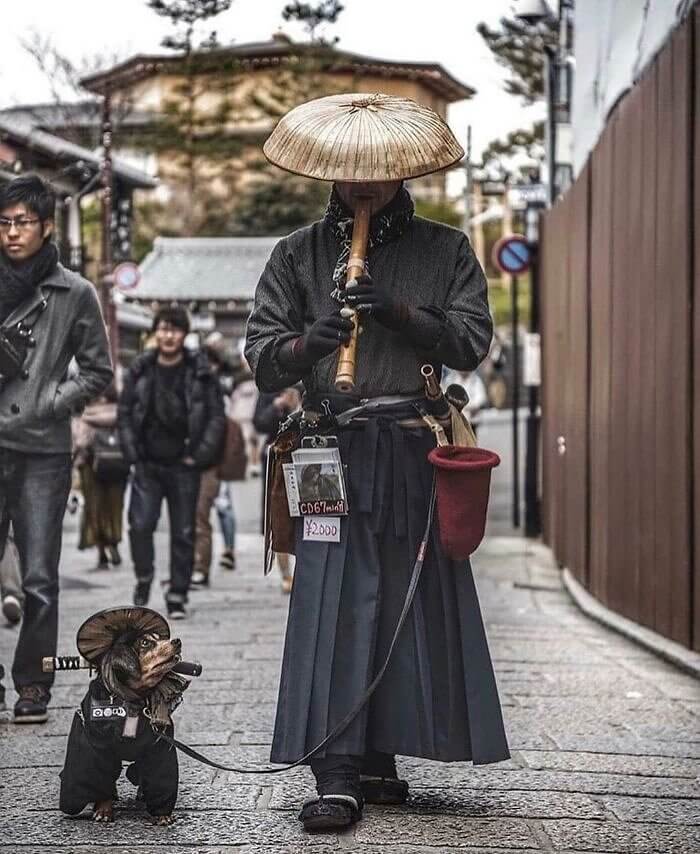
Kyoto, known as the cultural heart of Japan, is adorned with Buddhist temples, Shinto shrines, palaces, and gardens. Amidst these cultural gems, an unconventional yet charming duo adds their own touch to the city’s character. A man, accompanied by his dog in perfectly matching outfits, roams the streets playing the flute, adding a unique and delightful touch to Kyoto’s atmosphere while earning a bit of extra cash. It’s a dynamic and unexpected sight that might not be found in typical tourist guides but adds a special charm to the city’s tapestry.
A Special Respect for Nature

In contrast to many countries that may bulldoze nature for development projects, Japan takes a different approach. When faced with a magnificent tree standing in the way of a new road, instead of opting for destruction, they choose relocation. Rather than cutting it down, Japan values the preservation of nature, demonstrating a commitment to coexisting with and respecting the environment even in the face of development plans. It’s a thoughtful approach that highlights a dedication to balancing progress with environmental stewardship.
The Museum of the Rock Faces

Children all around the world are famous for finding rocks or leaves or something in nature that looks like a human face. However, it seems like it’s not only the kids who are interested in such formations. In Japan, there is an entire museum dedicated to displaying rocks that look like they are human faces. Some of them are cute and funny while others look terrifying and mean. It would be interesting to know how all the rocks got there. Is there a designated human face rock scouter or do people submit their findings?
When the Farmers Are Also Artists

It may look like a mural or painting at first glance, but to everyone’s surprise, it’s a different kind of artwork! In Japan, some skilled rice farmers elevate their farming to an art form. They plant different rice species in specific patterns to create incredible, precise artwork that can only be fully appreciated from high places. The result is not only colorful but also showcases an astonishing level of precision. Who would have thought that such stunning art could be crafted from different varieties of rice crops?
The Oldest Koi Fish in the World

What was born in 1751 and lived until 1977? Only Koi Hanako, the oldest recorded koi fish! Born in Japan, Hanako lived an astonishing 226 years, making it through centuries of history. The passing of this elderly fellow must have been a poignant moment. Imagining the incredible span of history Hanako witnessed is truly mind-boggling. We can only hope that this long-lived koi enjoyed a good and fulfilling life.
Underground Train Tracks for the Turtles

Turtles, like many other wildlife, face challenges when it comes to manmade structures like train tracks. The tracks can make it difficult for them to pass safely, resulting in casualties and train delays. Japan, in a thoughtful move, found a perfect solution: building tunnels underneath the train tracks. These tunnels provide a safe passage for turtles, ensuring their well-being while keeping the trains running on time. It’s a clever and compassionate approach to harmonizing technological progress with the preservation of wildlife.
The Telephone of the Wind
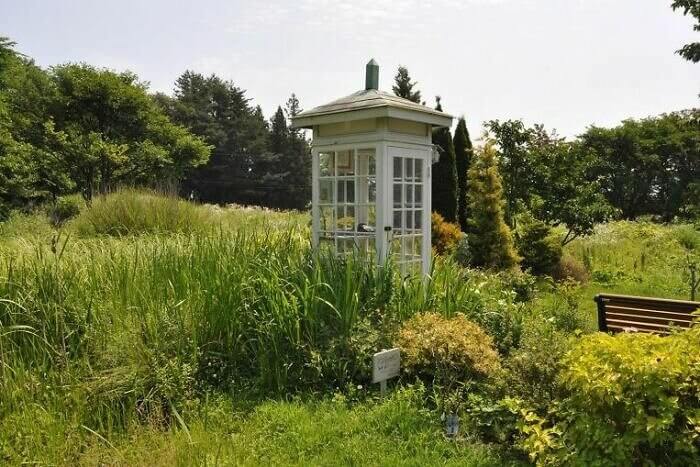
In Northeastern Japan, specifically in Otsuchi Town, there’s a special and unique structure known as “The Telephone of the Wind.” This beautifully decorated phone booth sits atop a hill with a view of the ocean. Although it’s not connected to any specific location, people visit to “call” out. It serves as a poignant space for Japanese individuals who come from all over to “call” their family members lost during the 2011 earthquake and tsunami. It’s a touching tribute and a symbolic way for people to connect with their loved ones who are no longer physically present.
Memorial to the 400 Year Old Bonsai Tree
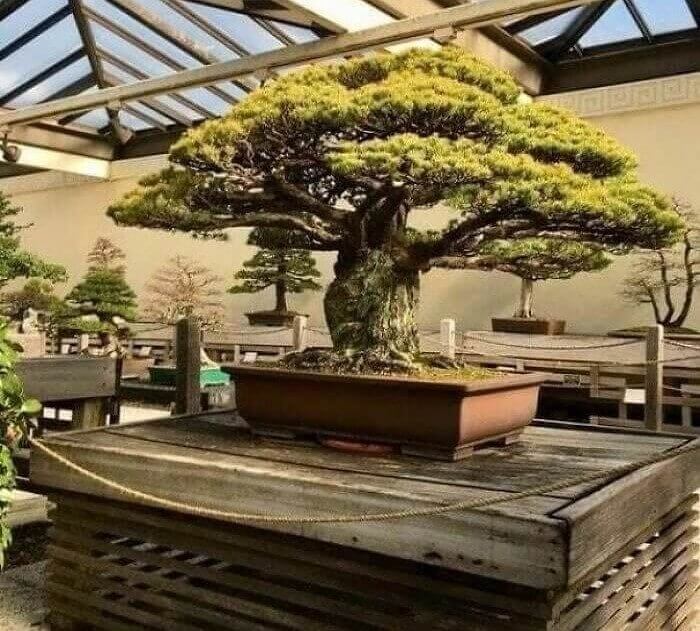
Bonsai trees are renowned for their longevity, often surpassing 100 years. Imagine the stories they could tell! This particular Bonsai, though relatively young at around 400 years old, has witnessed remarkable events throughout history. From the rise and fall of dynasties to world wars, it has silently observed it all. Perhaps most astonishingly, this tree is one of the few survivors of the bombing of Hiroshima. If it could speak, it would undoubtedly share tales of resilience and endurance through some of the most significant moments in history.
That’s Some Luxurious Hospital Food

Unlike the infamous reputation of hospital food worldwide for being unhealthy and unappetizing, Japan takes a different approach. In Japanese hospitals, the food is surprisingly on the luxurious side, featuring fresh vegetables, homemade pastries, and even sushi. This stands in stark contrast to the stereotype of bland and packaged hospital meals. Fortunately, in Japan, people don’t need to dread hospital visits as much, thanks to the emphasis on providing more appealing and nutritious food options.
The Right Way to Prune a Tree

Deforestation is a global concern, with the Amazon and other areas facing significant challenges. However, the Japanese have developed an innovative solution known as “Daisugi.” This ancient pruning method, dating back to the 14th century, allows for lumber production while preserving the trees. Instead of cutting down the entire tree, Daisugi involves carefully pruning and nurturing specific branches, promoting vertical growth. This method not only provides a sustainable source of lumber but also ensures the continued health and existence of the trees, offering a unique and environmentally friendly approach to forestry.
A Stop to Enjoy the Scenery

Train rides can indeed be monotonous, but in Japan, there’s a delightful twist. Some train stops don’t have stations or entries/exits; they’re merely stops along the journey. Passengers can disembark for a moment, stretch their legs, and enjoy the breathtaking view. It turns a mundane commute into a short and refreshing break, adding a touch of serenity and appreciation for the scenic beauty along the way. It’s a simple yet brilliant way to enhance the train experience.
A Scenic Train Ride

The idea of having seats that offer passengers a view of the scenery is indeed appealing, providing a happier and more enjoyable journey. While it might take up more space, the joy it could bring to passengers could be worth it. Interestingly, in Japan, there are scenic train rides specifically designed to offer passengers the option of sitting and enjoying the natural beauty as they pass. It’s a thoughtful approach that turns the journey into an experience, emphasizing the value of the scenic route and enhancing the overall train travel experience.
The Most Private Restaurant Experience

For introverts who find social events like going out to dinner overwhelming, a restaurant chain in Japan offers a dream come true. They provide private corner booths where diners can sit in total seclusion. A door opens in front of them, a chef drops off their food, and they are left to eat alone in peace. It’s a thoughtful solution, allowing introverts to enjoy a meal without the stress of being watched or surrounded by others, creating a comfortable and serene dining experience.
Color Coordinated Luggage Organization

Waiting for luggage at the airport can be a tedious task, especially when it all looks the same on the conveyor belt. However, at an airport in Japan, the baggage handling crew got creative to make the process easier. They color-coordinated all the luggage from a particular flight. This thoughtful approach allows passengers to quickly and easily identify their own pieces, making the often-frustrating task of collecting luggage a more efficient and enjoyable experience.
Easy and Built-In Gum Disposal

Dealing with a chewed-up piece of gum and finding a proper place to dispose of it can be a common struggle. Observing bus seats or railings often reveals the result of this challenge, with gum ending up in undesirable places. However, Japanese gum companies have a simple and thoughtful solution: a little stack of papers to conceal the sticky gum when you’re done chewing. This small, practical innovation helps keep public spaces cleaner and more pleasant for everyone.
The Cleanest Place to Experience a Flood

Japan has faced its share of natural disasters, from earthquakes to tsunamis, and the population has learned to cope with such challenges. Fortunately, the Japanese are known for their cleanliness, and despite the occurrence of natural disasters, the impact on the environment is mitigated by the population’s conscientious habits. Even in the face of adversity, the floodwaters in Japan remain remarkably clean, largely devoid of debris and trash. This commitment to cleanliness not only contributes to the aesthetic appeal but also facilitates more effective recovery efforts in the aftermath of natural disasters.
Salt Water Sprinklers to Keep the Streets From Freezing

Wintertime brings challenges, and icy roads are a significant concern. To address this issue, a ski resort in Japan has implemented a clever solution. They use small sprinklers, specifically saltwater sprinklers, to prevent the roads from freezing. This innovative approach ensures that the paths remain free from ice and slippery conditions, making it safer and more convenient for both pedestrians and drivers during the winter season. It’s a practical and effective way to tackle the challenges of icy roads.
Uniforms Everywhere

Indeed, school uniforms are a common sight in Japan, and it’s quite rare to find a school that doesn’t require them. This practice has deep historical roots, dating back to the 19th century when Japan underwent modernization and militarization. While the military aspect has faded away, the culture of school uniforms has persisted. Even though the original purpose was linked to a more militarized society, the tradition of wearing uniforms has become ingrained in Japanese school culture and continues to be a symbol of discipline and unity.
Constant Clean up Crew

Teaching the value of cleaning up after oneself from a young age is a commendable trait, and Japan emphasizes this practice. A striking example is seen with soccer fans who, after a match against the Ivory Coast, take the initiative to clean up any trash or mess they’ve left behind. This sense of responsibility is instilled early in Japanese culture, even in schools where children are taught to clean up after themselves. In many schools, there are no dedicated cleaners, fostering a collective responsibility for maintaining cleanliness and order. It’s a valuable lesson that promotes a sense of community and personal responsibility from a young age.
Nonstandard Public Toilets
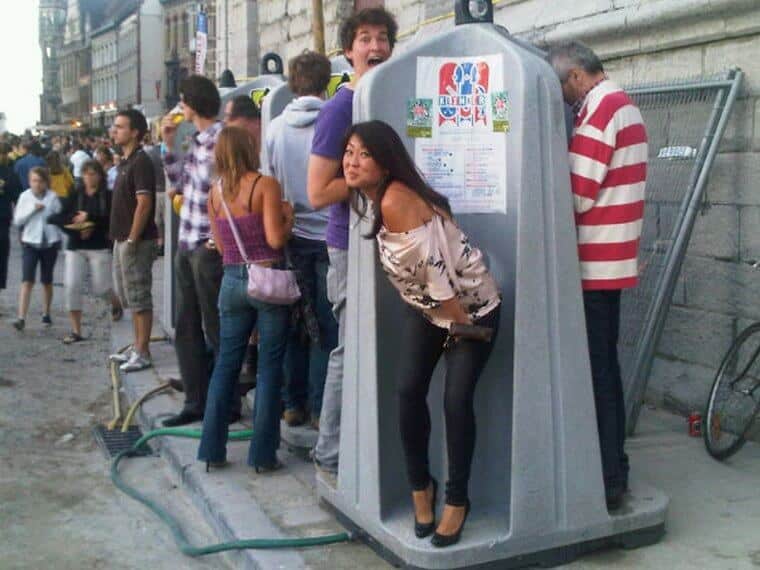
While Japan is renowned for its advanced toilet technologies, it does face challenges in terms of public toilet availability compared to some other parts of the world. Unlike in Europe or other Asian countries, it’s uncommon to see urinals on the streets of Tokyo. Recognizing the social stigma against public restrooms, a recent public service campaign has aimed to address this issue. The Japanese government is now investing in initiatives to encourage wider acceptance of public bathrooms, recognizing their importance for the convenience and well-being of the public.
Women’s Only Subway Cars

In response to a tragic rise in sexual harassment and rape cases in Japan, the government has taken steps to enhance the safety of women using public transportation. While the primary emphasis should undoubtedly be on changing the behavior of perpetrators, an immediate measure taken is the introduction of subway cars where only women are allowed. This provides women with an option to travel in an environment designed to minimize the risk of sexual harassment, offering a safer space within public transportation. It’s a step toward addressing a concerning issue and promoting the well-being of women in these public spaces.
The Nicest Origami Note

Receiving something from a faraway country is already special, but it becomes even better when the sender adds a personal touch like an adorable origami bird and a thoughtful note. Imagine getting a package with a message like, “Thank you very much for your purchase. If you like the item, please leave feedback. And if you need anything from Japan, let me know. I’m willing to find them. Have a nice day!” Such a personalized and considerate gesture from someone like Hiroko would undoubtedly leave a lasting and positive impression, likely prompting the recipient to leave the nicest review.
Maybe the Smoothest Train in the World

If you’ve had the incredible opportunity to ride the bullet train in Japan, you can attest that it’s undeniably one of the smoothest rides you’ve ever experienced. The ride is so smooth that, despite its incredibly high speed, you can keep a coin standing on its side as the train zooms along its route. This level of stability at such speed is a testament to the engineering excellence of the bullet train. Few other trains around the world can make such a remarkable claim, making the bullet train experience truly unique.
Pets Button on the Elevator

In high-end residential buildings in Tokyo, there’s an elevator button you’re unlikely to find elsewhere: the “Pets” option. When someone with a pet enters the elevator, they can press this button, activating a HEPA filter that purifies the air. Additionally, it sends a silent alarm to alert people with allergies, advising them to avoid that particular elevator until the air is thoroughly purified. This thoughtful feature not only addresses concerns about pet allergens but also enhances the living experience for residents with pets in these upscale buildings.
The Dreamy Umbrella Covered Walkway

Japan has taken the concept of colorful, umbrella-covered streets to a new level, outshining many others around the world. In Moominvalley Park of the Saitama Prefecture, semi-transparent umbrellas in a magical rainbow-like color combination create an oasis of beauty. Walking through this area feels like stepping into a kaleidoscope, with the vibrant hues transforming the space into a mesmerizing and enchanting experience. It’s a testament to Japan’s knack for turning ordinary things into extraordinary visual delights.
Pop Out Train Station Staff
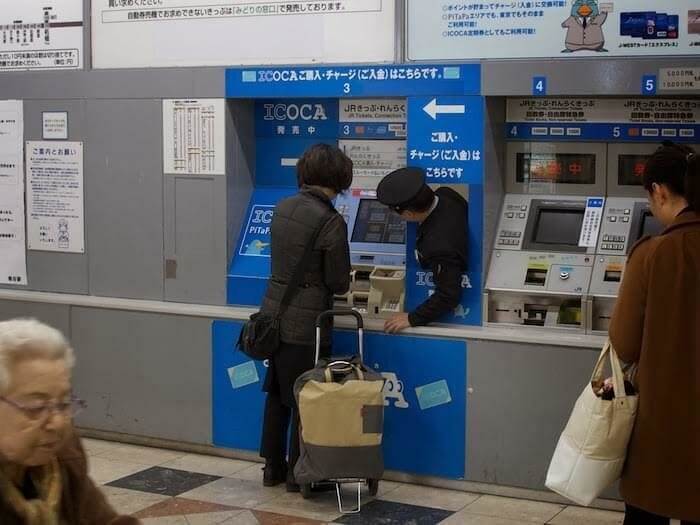
Next time you find yourself lost or confused at a train station in Japan, don’t worry—help is just a wall away! Literally, someone will pop out of the wall to assist you. While it might be a bit surprising at first, it ensures that you’ll get the help you need. This unique and innovative approach exemplifies Japan’s commitment to customer service and ensuring that visitors have a positive and helpful experience, even in unexpected ways.
Luxury Hospital Food in Japan – Part 2

Certainly, Japan takes hospital food to another level of luxury! Another impressive example showcases pancakes with fresh whipped cream that could easily pass as a dish from an expensive restaurant. The attention to detail, including the little garnish on top and the presentation on a wooden tray, makes it a visually appealing and appetizing meal. It’s a testament to Japan’s commitment to providing not only nourishing but also aesthetically pleasing and high-quality meals, even in a hospital setting.
Shockingly Pristine Drainage Canals
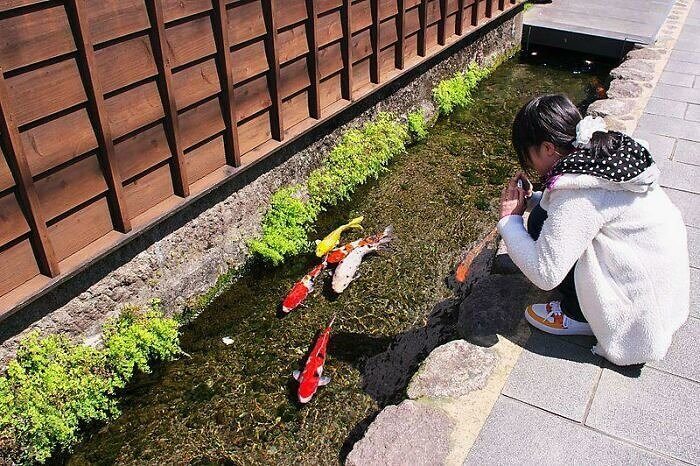
It might sound unusual, but in the city of Shimabara on Japan’s Kyushu Island, the words “drainage canals” and “pristine” can indeed be used together. These canals are exceptionally clean, so much so that they are home to hundreds of happy and safe koi carp throughout the year. It’s a beautiful and innovative concept, turning what might typically be seen as drainage water into a clean and vibrant habitat for these colorful fish. Japan’s commitment to cleanliness and harmony with nature is evident even in unexpected places like drainage canals.
A Volcano Inside of a Volcano on an Island

The story begins in a small village called Aogashima, nestled inside a volcano, which, in turn, encases a smaller, peaceful volcano within it. As if that weren’t intriguing enough, the entire island is situated in the middle of the sea. While undeniably a remarkable location, one can imagine that living in such a place might evoke a mix of awe and perhaps a touch of trepidation. The unique setting of Aogashima makes it sound like the beginning of an adventure book, where nature’s wonders and human settlements coexist in an extraordinary and slightly intimidating harmony.
Clever Newspaper Advertisements

Printing on just one side of the newspaper might seem like offering only half the story. However, some clever marketing tactics take advantage of this by printing double-sided. When held up to the light, readers can see the entire picture, revealing a whole new side of the advertisement. It’s a creative way to engage viewers and provide a unique and interactive experience, turning a simple newspaper into a canvas for hidden surprises and additional content.


